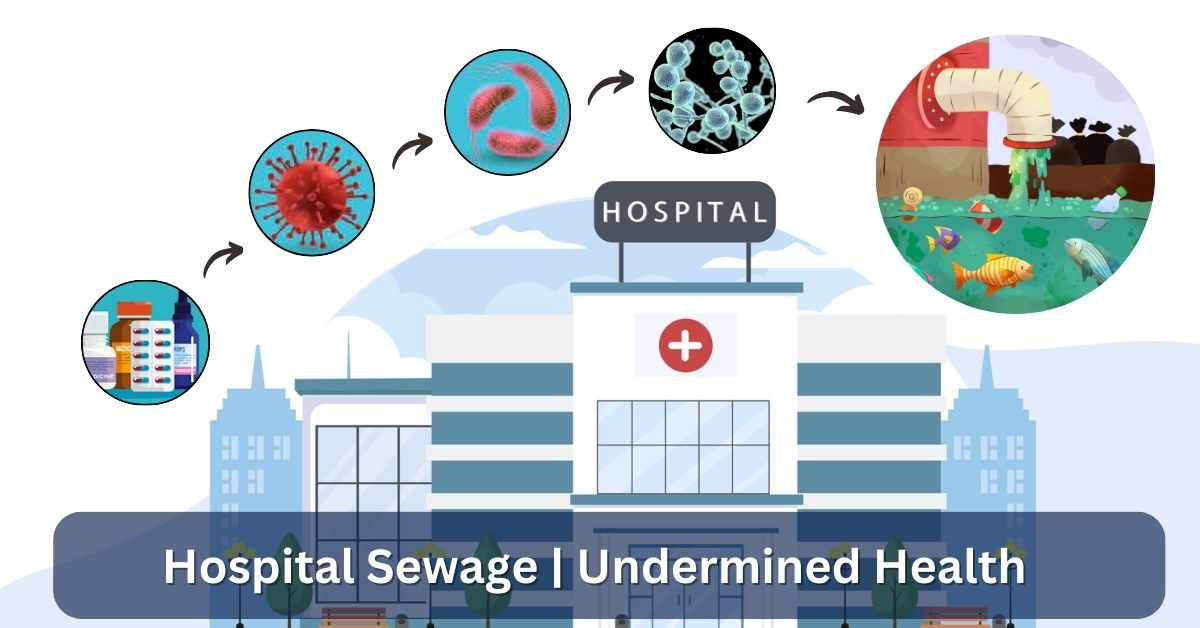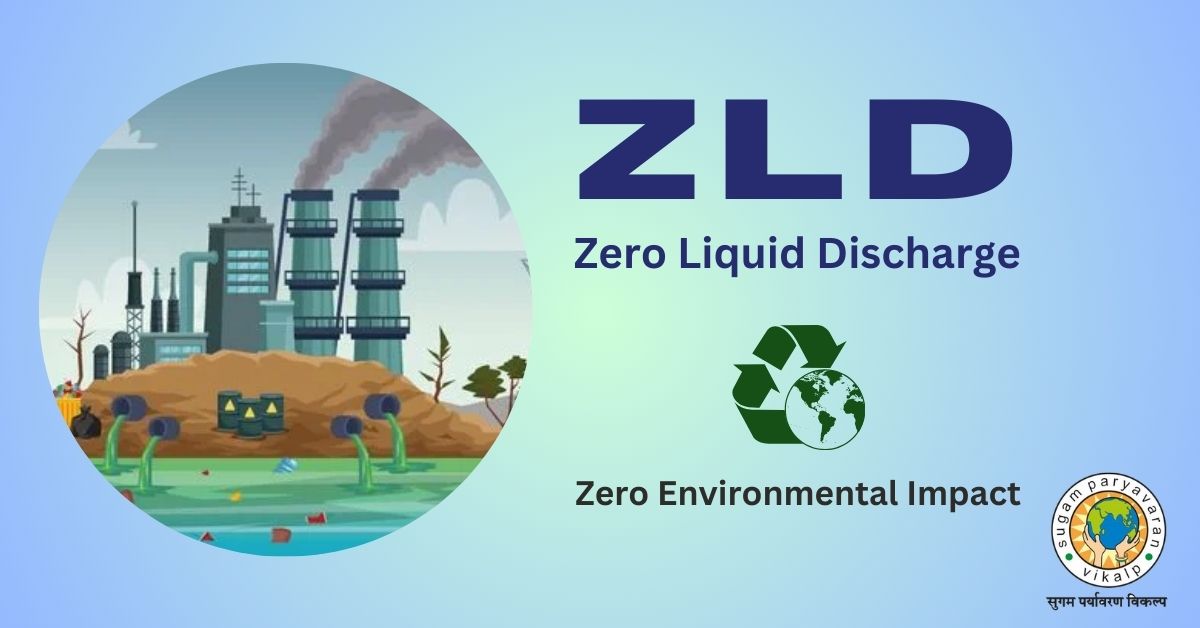HOSPITAL SEWAGE: Undermined Health

Date: JULY 24, 2024 | Author: DR AVINASH KADAM (Ph. D, IIT Bombay)(MD at Sugam Paryavaran Vikalp Pvt Ltd)
Hospital Sewage
Hospitals play a pivotal role in the well-being of humanity and facilitate research in the field of medical advancement. As per one report, the worth of the Indian health sector has been projected to jump from 140 billion U.S. dollars in the year 2016 to 372 billion dollars by the year 2022.
It is well established that the hospitals in developed countries generate a significantly higher volume of wastewater as compared to hospitals in developing countries still the quantum and impact cannot be undermined. It is reported that the wastewater generated by developing countries varies from 200 to 400 L/capita/day, while in developed countries, it varies from 400 to 1200 L/capita/day. Hospitals around the globe require large amounts of water for their proper functioning for various health care facilities. According to the World health organization (WHO) guidelines for the proper functioning of healthcare facilities, 40–60 L/day of water is required for every inpatient. Operating theatres require around 100 L/intervention. The amount of water required for patients dealing with a severe acute respiratory syndrome or viral hemorrhagic fever is around 100–400 L/patient/day. Water consumption is directly linked to wastewater generation. The amount of wastewater generated from the hospital is computed by counting number of beds available in the hospital, type and size of the healthcare facility, technical facilities available, services provided (laundry, kitchen, air-conditioning), in-house wastewater management facilities, etc.
CHARACTERIZATION OF Hospital Waste Water
Hospital wastewater (HWW) is also characterized by the presence of various emerging contaminants, such as pharmaceutically active com- pounds (PhACs), several microorganisms including antibiotic-resistant bacteria (ARB), antibiotic-resistant genes (ARG), persistent viruses, etc. . Generally, HWW comprises high biochemical oxygen demand (BOD), chemical oxygen demand (COD), ammonia, and nitrogen content, and their concentration is higher compared to the domestic wastewater. BOD is the amount of oxygen consumed by microorganisms to decompose organic matter under aerobic conditions at a specific temperature and duration of time, while COD is the amount of oxygen equivalents consumed in the chemical oxidation of organic matter by a strong oxidant. The ratio of BOD and COD of wastewater is referred to as the biodegradability index or recalcitrance. The biodegradability index of HWW is also lower than the municipal wastewater, making them difficult to treat by conventional biological system. The average BOD/COD ratio for HWW around the world was found to 0.29–0.34 in Asia and Europe, respectively, which was also considerably less than the values seen in municipal wastewater, thereby making hospital effluent difficult to treat. Viruses, ARB, and ARG continue to survive even after the treatment of HWW, and their release to the aquatic ecosystem imposes a significant threat to the environment. The average COD concentrations in HWW of Europe, South America, and Asia were found to be 613 mg/L, 1074 mg/L, and 591 mg/L, respectively. High COD concentrations of 2480 mg/L, 2464 mg/L, and 1142 mg/L were observed in some studies in Brazil, Spain, and India, respectively.
BIO HAZARD of HWW
Apart from being pathogenic, these microorganisms may also have developed antimicrobial or antibiotic resistance. The fecal matters and urine also contain unmetabolized PhACs, which had been administered to the patients during treatment. The grey- water or sullage is the water coming out of washing, bathing, laundry, and other processes like rinsing of X-Ray films, disinfection, etc. This water contains recalcitrant compounds such as surfactants, detergents, and other cytotoxic or genotoxic agents and radioactive elements. The wastewater generated from activities pertaining to laboratory work, such as research and diagnosis, radiology department, are classified under specific discharges. This wastewater contains highly toxic substances, such as disinfectants, detergents, acids, alkalis, pharmaceutical residues, solvents, X-ray contrast media, etc. These substances are highly toxic and persistent and stay in the aqueous environment even after conventional treatment processes. The effluents coming out of hospitals also contain toxic heavy metals, such as Cd, Cu, Ni, Hg, Sn, etc. Hospital effluents are a host to numerous bacteria and pathogenic microorganisms, such as Escherichia coli (E. coli), Enterococci, thermo- tolerant coliform, faecal coliform, etc. This was because HWW contains large amounts of antibiotics, disinfectants, etc., making the ESBL producing microorganisms resistant to them. Unlike normal E. coli, these ESBLEs produce infections in human beings that can no longer be treated by ordinary antibiotics, making them a cause of concern. Pseudomonas aeruginosa is another multidrug-resistant pathogen found in HWW. Different phylums in HWW, such as proteobacteria, planctomycetes, nitrospirae, caldithrix, chlorobi, and acidobacteria were found to be resistant to various anti- biotics, among which tetracycline was the most common. There are more than 120 identified human enteric viruses, among which the enteroviruses (polio-, echo- and coxsackieviruses), adenovi- ruses, hepatitis A, rotaviruses, and human caliciviruses (noroviruses) are most prevalent in HWW.
HWW treatment: Reality check
Usually, hospital effluents are directly discharged into the municipal sewer systems and then they are treated with municipal sewage treatment plants. However, most of the sewage treatment plants are not designed to tackle bio-medical waste and persistent organic compounds, such as PhACs, personal care products, etc. Furthermore, there have been reports that many hospitals in developing countries, discharging their effluent into drainage systems, rivers, and lakes without any pre-treatment. HWW, among all other healthcare waste, imposes a grave hazard to human health and the environment because of their capability to enter watersheds, pollute surface and groundwater, when inappropriately handled and disposed to hydrosphere.
Over the last two decades, various treatment processes have been implemented and up-scaled to pilot or full-scale treatment system for treating HWW. Primary treatment is required to provide a pre- treatment to the hospital wastewater. It has to be followed by biological process where different options are suggested - such as ASP, MBR, MBBR, and CWs. These biological units can also be combined with different disinfection, adsorption or advanced oxidation technologies to enhance the removal of recalcitrant organic pollutants. Tertiary treatment can also be provided directly after pre-treatment. However, the performance of these processes are usually hindered due to nature of the HWW. The disposal of harmful secondary sludge and sanitization are also important issue in these biological treatments, SBT can handle hosital wastewater without generating any sludge and maintening maximum sanitization giving results within CPCB limits. There is requirement of sensitization of all stake holders regarding the potential health hazard of HWW– such as Pollution Control Board, Hospital management, local administrative bodies such as Municipal Corporations and Councils.
In conclusion, HWW shall not be discharged without treatment directly to Municipal sewer and secondly, treatment of HWW using domestic wastewater treatment plants should not be favoured as many unique parameters in HWW cannot be removed by conventional system.






